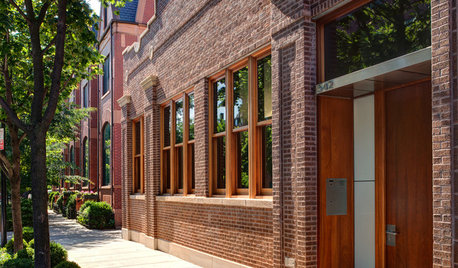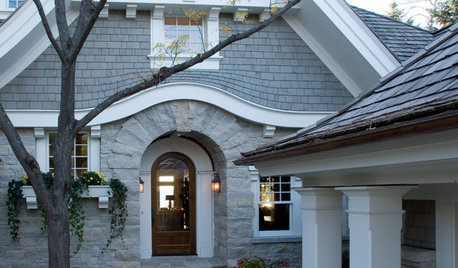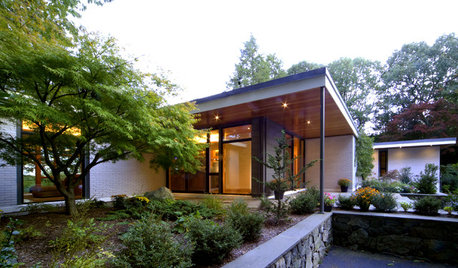Hypertufa as building facade?
Girl_frm_Jersey
18 years ago
Related Stories

MODERN ARCHITECTURESaving Facades: Modern Gems Merge Old and New
Restored exteriors full of character wrap light-filled interiors designed for modern life
Full Story
REMODELING GUIDESStar Home Facade Combo: Stone and Shingle
Forget one-note home exteriors. A facade that combines stone and shingle gives houses depth, character and curb appeal
Full Story
CONTEMPORARY HOMESMy Houzz: Color and Fun Behind a Victorian Facade
Eclectic high-end and thrifty furnishings give a Toronto family’s traditional 1880s townhouse new flair
Full Story
CURB APPEALThe Cure for Houzz Envy: Great Front Facade Touches to Borrow
Pull up to a better view and make visitors feel welcome by perking up your home’s face
Full Story
ARCHITECTUREHigh-Impact Updates for Your Midcentury Facade
Focusing on exterior details can be key to an affordable remodel that allows the original design to shine through
Full Story
HOUZZ TOURSHouzz Tour: Victorian's Beauty Is More Than Skin Deep
A London home keeps its historic facade but is otherwise rebuilt to be a model of modern energy-efficiency
Full Story

GREEN BUILDINGWhy You Might Want to Build a House of Straw
Straw bales are cheap, easy to find and DIY-friendly. Get the basics on building with this renewable, ecofriendly material
Full Story
ARCHITECTURE4 Zurich Projects Build on High-Rise Livability
Generous landscaping, underground parking and terraces make these apartment complexes models of thoughtful housing
Full Story






Dena6355
tufaenough
Related Professionals
Chattanooga Landscape Architects & Landscape Designers · Eden Prairie Landscape Architects & Landscape Designers · North New Hyde Park Landscape Architects & Landscape Designers · Saint Louis Park Landscape Architects & Landscape Designers · McKinney Landscape Contractors · Annandale Landscape Contractors · Canyon Lake Landscape Contractors · Cockeysville Landscape Contractors · Coeur d'Alene Landscape Contractors · Costa Mesa Landscape Contractors · New Cassel Landscape Contractors · Pine Hills Landscape Contractors · Riverview Landscape Contractors · South Portland Landscape Contractors · Waterford Landscape ContractorsBelgianpup
tufaenough
gottatufa
Dena6355
tango88
Belgianpup
Girl_frm_JerseyOriginal Author